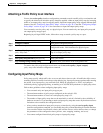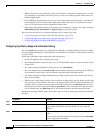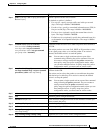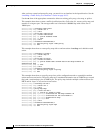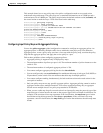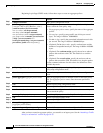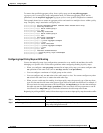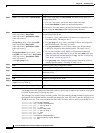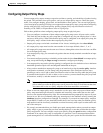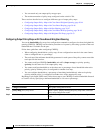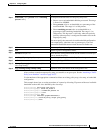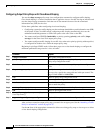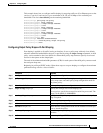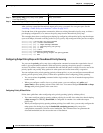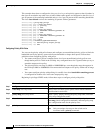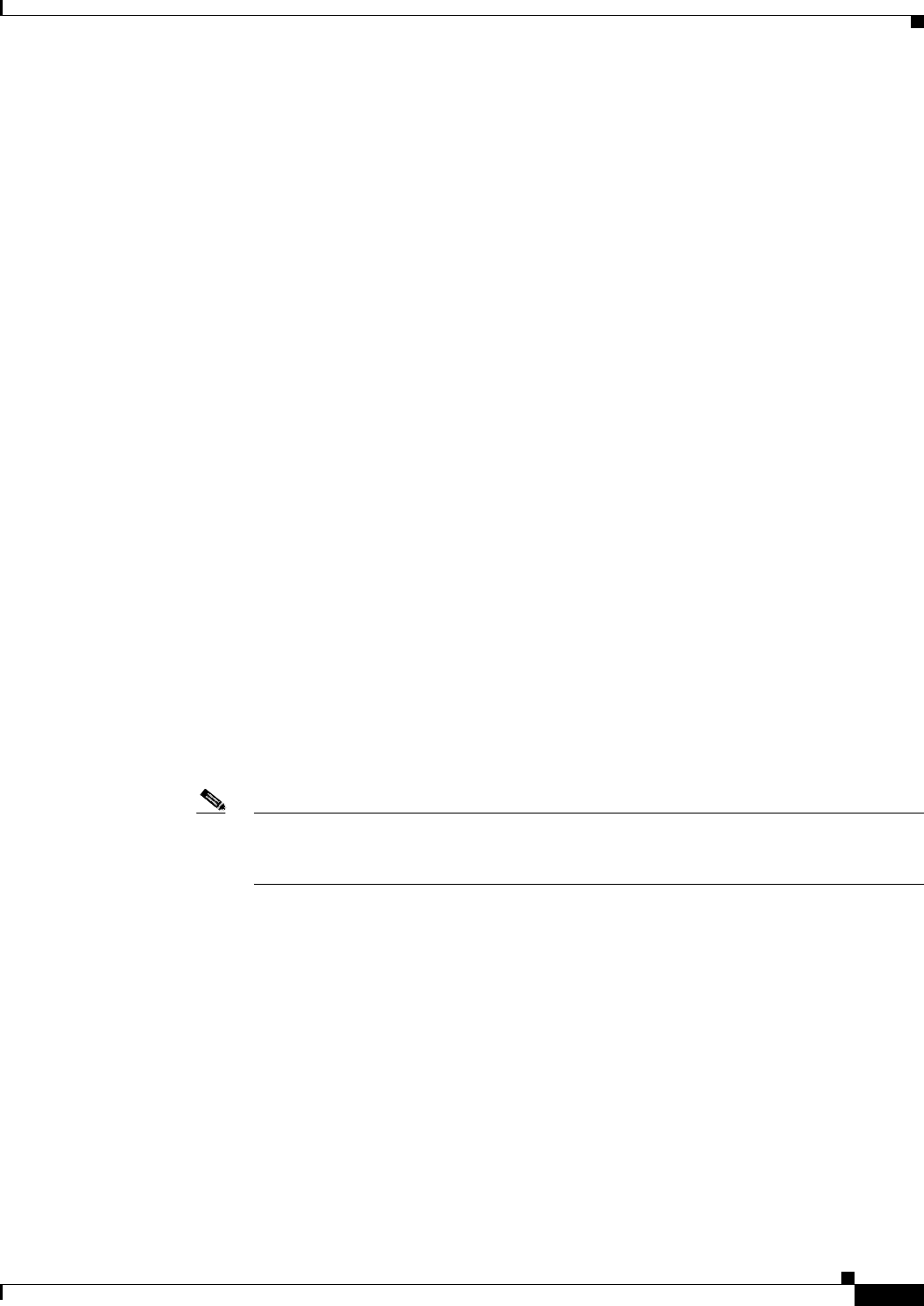
30-43
Cisco ME 3400 Ethernet Access Switch Software Configuration Guide
78-17058-01
Chapter 30 Configuring QoS
Configuring QoS
Configuring Output Policy Maps
You use output policy maps to manage congestion avoidance, queuing, and scheduling of packets leaving
the switch. The switch has four egress queues, and you use output policy maps to control the queue
traffic. You configure shaping, queue-limit, and bandwidth on these queues. You can use high priority
(class-based priority queuing). Policing is not supported on output policy maps, except when configuring
priority with police for class-based priority queuing. Output policy map classification criteria are
matching a CoS, DSCP, or IP precedence value or a QoS group.
Follow these guidelines when configuring output policy maps on physical ports:
• You can configure a maximum of three unique output policy maps across all ports on the switch.
This limit does not include any policy map that is configured only for port shaping (that is, it does
not have a child-policy). When a hierarchical policy map is configured as an output policy map, the
child policy map is counted in the three output policy-map limit.
• Output policy maps can include a maximum of four classes, including the class class-default.
• All output policy maps must have the same number of class-maps defined, either 1, 2, or 3.
• All output policy maps must use the same set of classes, although the actions for each class can differ
for each output policy map.
• In an output policy map, you can match only packets that are already matched or marked in an input
policy map.
• You cannot configure queuing or scheduling actions under the class class-default in an output policy
map, except when using the shape average command to configure port shaping.
• In an output policy map, unless priority queuing is configured, the class default receives a minimum
bandwidth guarantee equal to the unconfigured bandwidth on the port.
• After you have attached an output policy map to an interface by using the service-policy interface
configuration command, you can change only the parameters of the configured actions (rates,
percentages, and so on) or add or delete classification criteria of the class map while the policy map
is attached to the interface. To add or delete a class or action, you must detach the policy map from
all interfaces, modify it, and then reattach it to interfaces.
Note If you anticipate that you might need three classes in a policy map, you should define three
classes when you create the policy map, even if you are not ready to use all three at that time.
You cannot add a class to a policy map after it has been attached to an interface.
• When at least one output policy map is attached to a active port, other active ports without output
policy maps attached might incorrectly schedule and incorrectly order traffic that uses the same
classes as the attached output policy maps. We recommend attaching output policy maps to all ports
that are in use. We also recommend putting any unused ports in the shutdown state by entering the
shutdown interface configuration command. For example, if you attach an output policy map that
shapes DSCP 23 traffic to a port, then DSCP traffic that is sent out of any other port without a policy
map attached could be incorrectly scheduled or ordered incorrectly with respect to other traffic sent
out of the same port.
• We strongly recommended that you disable port speed autonegotiation when you attach an output
policy map to a port to prevent the port from autonegotiating to a rate that would make the output
policy map invalid. You can configure a static port speed by using the speed interface configuration
command. If an output policy-map is configured on a port that is set for autonegotiation and the
speed autonegotiates to a value that invalidates the policy, the port is put in the error-disabled state.



